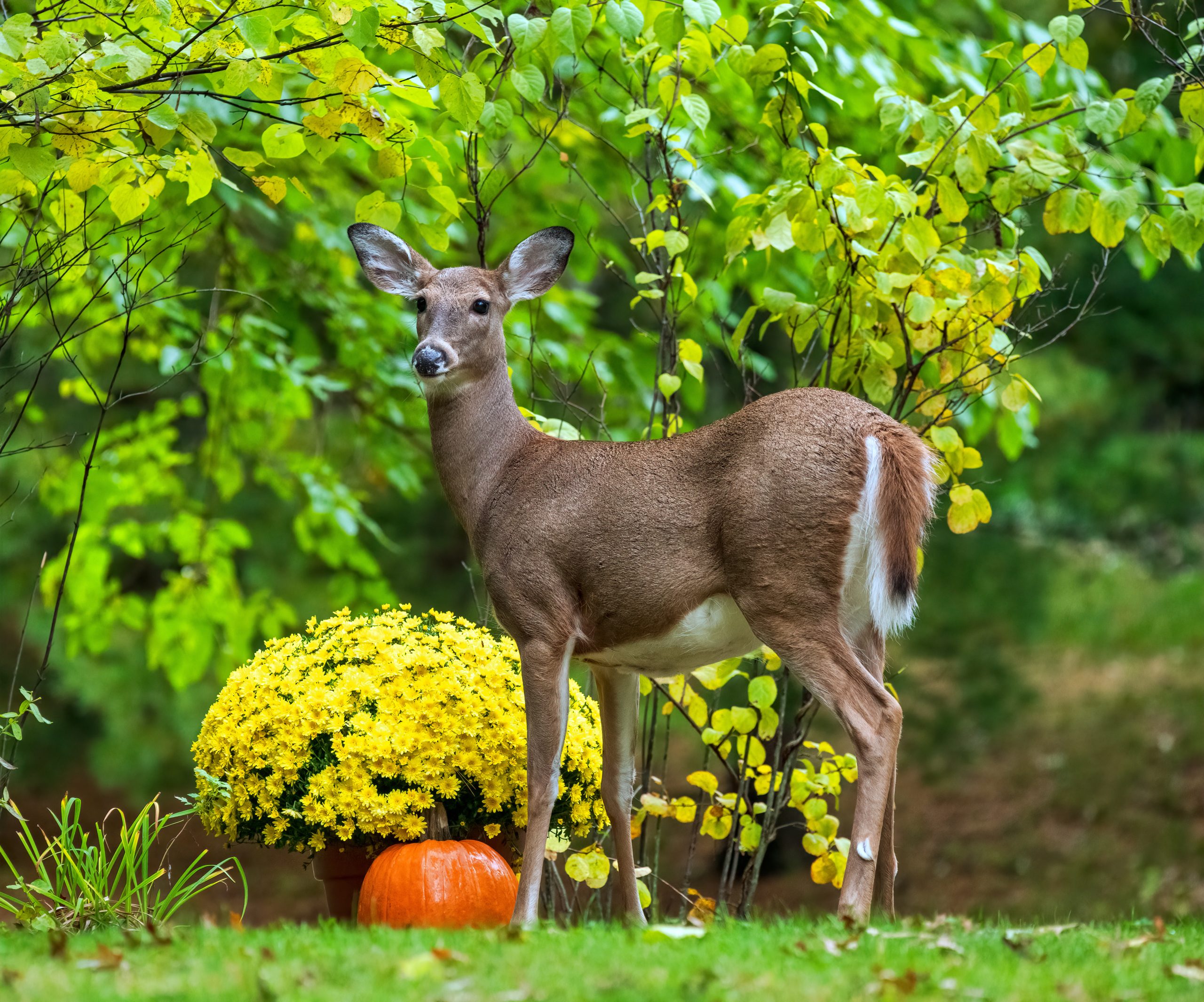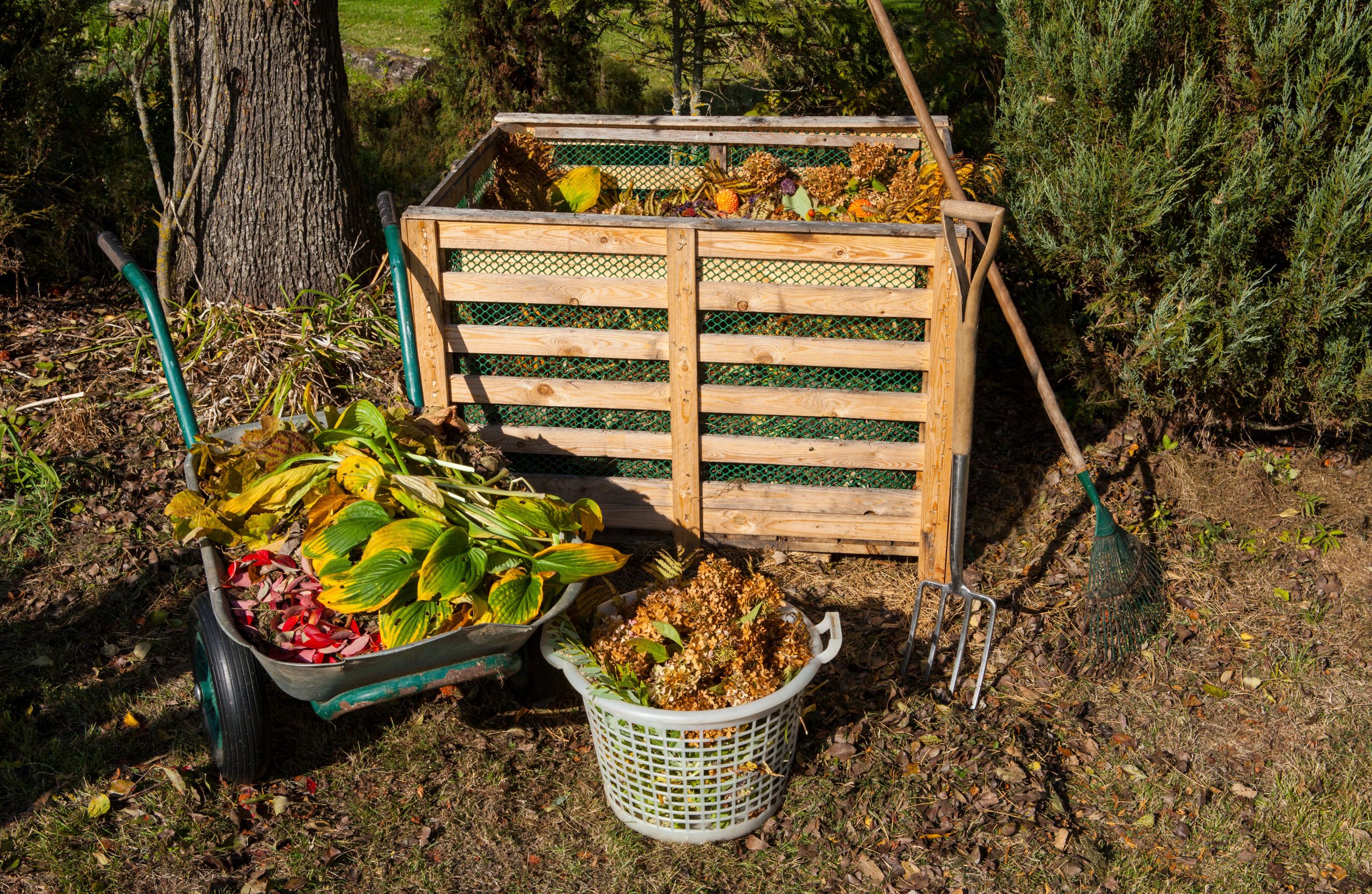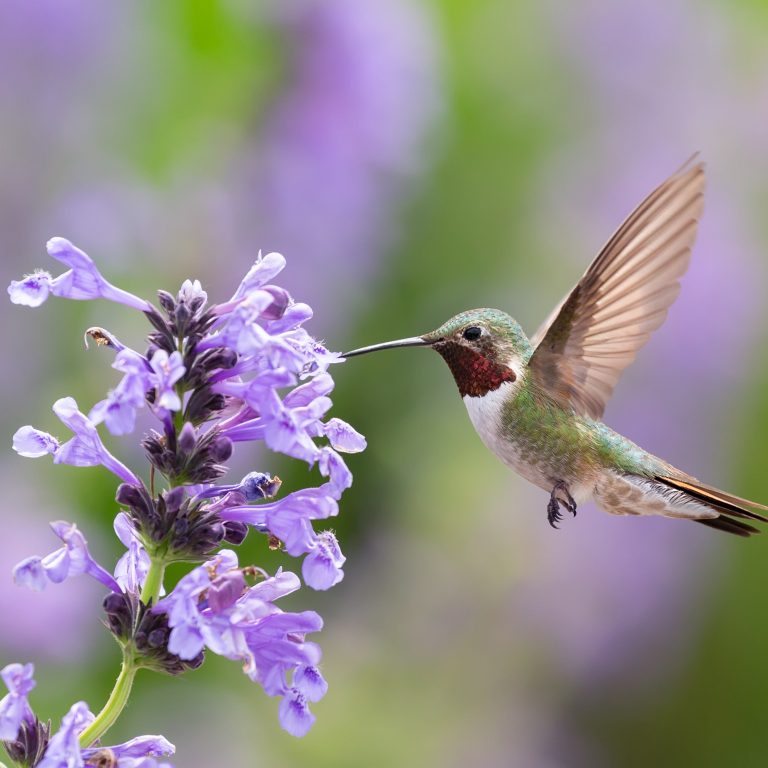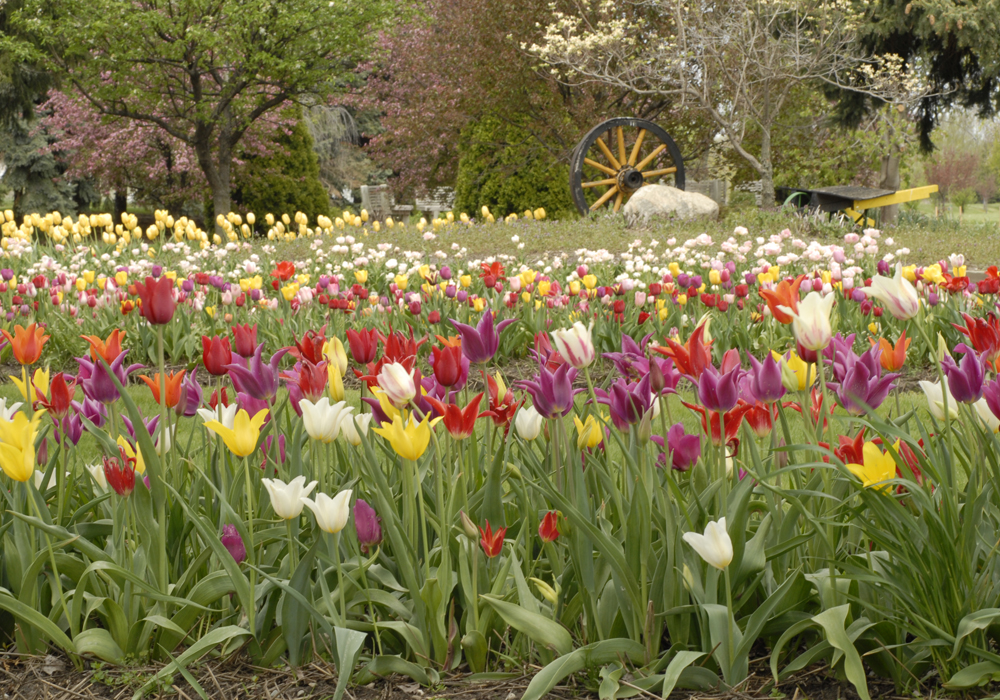Fall Gardening and Landscape Care

As your landscape begins coloring up for fall it is time to help transition your gardens for winter and the coming year. Those of you in warm climates are switching to winter annuals, while those in colder regions are fortifying their landscapes for the cold winter ahead. No matter where you live, invest some time in preparing your landscape for the change in seasons. Dedicating some time now will pay off with a healthier more beautiful landscape next spring and for years to come.
Fall is for Planting
The soil is warm and the air is cool providing excellent conditions for planting and establishing trees, shrubs, and perennials. Many garden centers add healthy new plants to their inventory specifically for planting this fall. Look for trees, shrubs, and perennials that add beauty and interest to the fall garden. Colorful foliage and fruit, seed heads add color and texture to the landscape and many provide seeds and berries to attract songbirds to your gardens. You’ll find plants suited to your climate and many exhibiting colorful fall foliage and fruit at your favorite garden center.
Add some fall favorite flowers like pansies, ornamental cabbage, asters, and mums to containers and garden beds. Those lucky enough to garden in warm climates can also switch out summer annuals for a colorful winter display filled with sweet alyssum, pansies, snapdragons, calendulas, and more.
Plant a few spring flowering bulbs this fall for a colorful early spring display. Prepare the soil before planting. Work compost or other organic matter into the top twelve inches of soil to improve drainage which is essential for success.
Wait until the soil is cool to plant your bulbs. This is usually after the first hard frost or when night temperatures average between 40° and 50° F (4° to 10° C). Those gardening in mild climates need low-chill bulbs that will thrive and flower after a mild winter. Or purchase pre-cooled bulbs for winter planting and spring flowers.
Select animal-resistant bulbs to avoid squirrels digging up the bulbs and deer and rabbits eating the blooms. Daffodils, hyacinths, fritillarias, and grape hyacinths are a few to consider. Little Tommies (Crocus tommasinianus) tend to be more squirrel-resistant than other crocus varieties.
Prevent animal damage to tulips, crocus, and lily bulbs with the help of Plantskydd organic repellent. Lay the bulbs out on newspaper, apply the liquid Plantskydd, and allow the bulbs to dry before planting. Add an extra layer of protection by sprinkling the granular repellent over the soil surface. In spring begin protecting the plants before the animals begin feeding. Follow label directions for the proper timing of additional applications.
Mix a low nitrogen slow-release fertilizer into the soil surface and water thoroughly after planting. Continue watering thoroughly when the soil is dry throughout the fall while the bulbs grow roots.

Reduce Ongoing Maintenance
Look for ways to reduce ongoing maintenance and improve the health of your plants. Create larger planting beds that incorporate individual trees and shrubs. You’ll save time by eliminating the need to mow or hand trim around individual plants. Plus, you’ll improve the growing conditions for your trees and shrubs. Fill the space between these plants with low-maintenance perennials and groundcovers for added beauty or mulch.
Fall is also a good time to refresh mulch or expand mulched areas around individual trees and shrubs. The larger the mulch bed the better for these plants as grass is a major competitor of young trees and shrubs. Maintain a 2-to-3-inch (5 to 7.5 cm) layer of woodchips or shredded bark mulch over the soil and always pull it away from the trunk of the trees and stems of shrubs. Mulch piled against tree trunks and shrub stems increases the risk of rot, girdling roots, and vole damage.
Mulching the soil surrounding these plants helps suppress weeds, conserve moisture, moderates soil temperatures, and improves the soil as the organic mulches decompose. This helps improve the health of your plants and reduces ongoing maintenance for you. Make sure all new and existing plantings receive sufficient water throughout the fall and early winter.
Protect Trees and Shrubs from Hungry Animals.
Properly installed and maintained fencing is an effective option for preventing animal damage but is not always practical. Enclose individual plants or small beds with animal fencing. Sink the fencing several inches into the soil to keep voles from eating trees and shrub bark over winter. The fencing should be at least 4 feet (1.2 meters) high for rabbits and 5 to 6 feet (1.5 to 1.8 meters) high for deer when fencing small garden beds. Taller deer fencing, closer to 8 feet, is needed to keep deer out of large areas.
Scare tactics are less effective as wildlife has become accustomed to human smells, sounds, and activities. Try a variety of scare tactics and change them often if you opt for this approach.
Plantskydd rain and snow-resistant repellent protect plants by repelling deer, elk, moose, rabbits, chipmunks, squirrels, and voles before they take a bite out of the plants. Begin applying repellents before the animals start feeding for the best results. Since Plantskydd is rain and snow resistant you will need to apply it less often. Check the label for application rates and timing.
Prevent Ice and Snow Damage on Upright Arborvitae and Junipers
Loosely tie the upright stems of these plants together with strips of cloth. This technique prevents snow and ice from piling on top of the plants causing individual stems to bend.
Wrapping the plants in bird netting is another option. It secures the stems, is less visible, and may even discourage deer from nibbling on the plants.
Water as Needed
Be sure to water evergreens and new plantings thoroughly before the ground freezes as part of your fall yard maintenance. Even established trees need thorough watering when rainfall is limited. Provide 10 gallons of water for every inch diameter of tree trunk. Water the area under the tree canopy and several feet beyond for evergreens.
Manage Leaves with Less Effort and Greater Benefits
Cut the grass, recycle fall leaves, and improve the soil with a pass of the lawn mower. Shred leaves and leave them on the lawn as you mow this fall. As long as you can see the grass through the leaf pieces, the lawn will be fine.
Leaving fall leaves on the lawn is good for the grass and saves you time. As the leaves break down they add organic matter to the soil, improving drainage in clay soil and water-holding ability in sandy soils. It’s a great way to recycle a valuable natural resource and reduce your workload. You can increase the environmental benefit even further by using an electric mower to both cut your grass and shred the leaves.
Put fall leaves to work in the garden. Add shredded leaves to your compost pile or dig them into annual gardens as a soil amendment. Just dig a two-to-three-inch (5-to-7.5 cm) layer of shredded leaves into the top 12 inches (30 cm) of annual or new planting beds. The leaves will decompose over winter adding organic matter to the soil. By spring, your garden bed will be ready to finish preparing and planting.
Spread fall leaves on top of the soil around permanent plants as a mulch. They help insulate the roots, conserve moisture, suppress weeds, and as they break down improve the soil. Fall mulching gives you a jump on next spring’s landscape chores. It also provides winter homes for some beneficial insects and insulation for bumblebee queens, frogs, and others that overwinter in the soil.

Leave Healthy Perennials Stand for Winter
The standing remnants of perennials add motion and texture to the landscape. The seedheads add beauty and many provide food for the birds. Hollow stems of many perennials provide winter homes for a variety of beneficial insects. You’ll also increase winter survival as research found perennials left standing are better able to tolerate the rigors of winter.
Be sure to cut back on any diseased or insect-infested plants. Removing the diseased or insect-infested plant parts helps reduce the source of disease and insect pest problems in next year’s garden.
Continue or Begin Composting landscape trimmings.
Composting can be as easy as putting insect- and disease-free landscape trimmings into a pile and letting them decompose. Do not add perennial weeds, invasive plants, or annual weeds gone to seed unless you are actively composting. Otherwise, these survive the composting process and you will return them to the garden with the compost. No meat, dairy, fat, or bones should be added as these attract rodents.
Speed up decomposition by layering the plant trimmings. Start with a layer of 8 to 10” (20 to 25cm) of landscape trimmings. Mixing nitrogen-rich materials like grass clippings free of herbicides, plant-based kitchen scraps and manure with carbon-rich materials like fall leaves and straw speeds the decomposition. Spread a layer of compost over this and sprinkle with fertilizer. Repeat the layering until the pile is at least 3 feet tall and wide. Moisten to the consistency of a damp sponge.
Turn the pile occasionally moving the material in the center of the pile to the outside and the material on the outside to the warmer space in the center. This more intense method yields compost in about 4 months.
Compost tumblers make turning much easier. Consider using a dual bin composter or two tumblers instead of just one. This allows you to stockpile raw materials in one bin while actively composting in the other. Separating the two yields faster results.
No matter where you live or the size of your garden, get outdoors and enjoy the beauty of fall. And be sure to invest a bit of time and energy now to ensure your landscape is ready for the season ahead.





